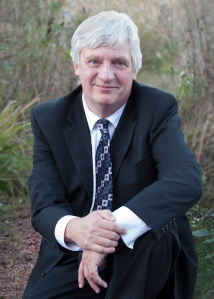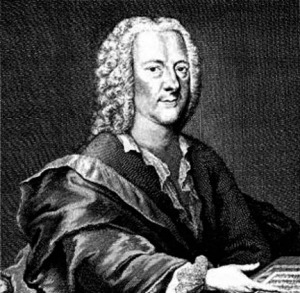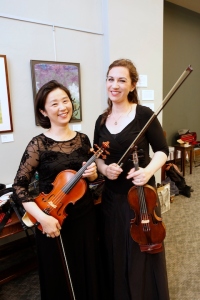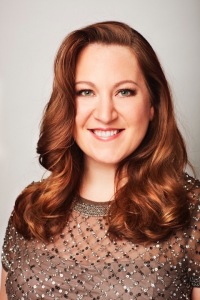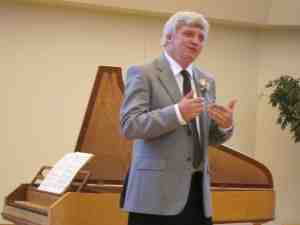The Well-Tempered Ear
The third LunART Festival celebrates Black women in the arts with FREE streaming concerts and events this Saturday night, Oct. 10, and next Saturday night, Oct. 17
Leave a Comment
PLEASE HELP THE EAR. IF YOU LIKE A CERTAIN BLOG POST, SPREAD THE WORD. FORWARD A LINK TO IT OR, SHARE IT or TAG IT (not just “Like” it) ON FACEBOOK. Performers can use the extra exposure to draw potential audience members to an event. And you might even attract new readers and subscribers to the blog.
By Jacob Stockinger
The Ear has received the following announcement to post:
The LunART Festival is back for its third season, continuing its mission to support, inspire, promote and celebrate women in the arts, with a special presentation, “Human Family,” available via two FREE video livestreams on LunART’s website and Facebook page on Saturday, Oct. 10, and Saturday, Oct. 17, at 7 p.m. CDT.
The events will be co-hosted by LunART founder and flutist Iva Ugrcic (below top), and by vocalist and art administrator Deja Mason (below bottom).
In response to the most recent and ongoing racial inequality and in solidarity with the Black Lives Matter movement, LunART will present the “Human Family” virtual festival featuring art created by Black women.
These FREE streamed events will feature a palette of emerging and established artists drawn from Madison’s rich arts scene, while also celebrating those who have paved the way for generations to come.
Radical inclusivity has been part of LunART’s mission from its conception. While women have historically been underrepresented in the arts, we cannot deny that there are segments of women that have been doubly marginalized, including women of color, women in the LGBTQIA+ community, older women and women with disabilities.
Part of creating a more just, inclusive world means recognizing that even within the space of underrepresentation, there remain disparities.
Works from the past include Florence Price’s “Five Folksongs of Counterpoint” for string quartet (heard in the YouTube video at the bottom), which is deeply rooted in the African-American spiritual tradition; Margaret Bonds’ Spiritual Suite for solo piano, written in a neo-Romantic classical style infused by jazz harmonies and rhythms; Afro-American Suite for flute, cello and piano by Undine Smith Moore, based on authentic spiritual songs used to express and record everyday life of slaves in America.
Florence Price (below), Margaret Bonds and Undine Smith Moore all fought against both racial and gender discrimination throughout their lives. To be a woman composing classical music in the mid-20th century was unusual; to be a Black woman composer was even more so. And yet, these women forged ahead, making history and paving the way for the women who would follow them.
Along with these pioneers of the past, LunART will also celebrate contemporary Black women who are making a big impact in the world of arts, culture, advocacy and activism, following the footsteps of their predecessors.
“Voodoo Dolls” for string quartet by Jessie Montgomery (below in a photo by Jiyang Chen) is influenced by West African drumming patterns that are interwoven with lyrical motifs in the improvisatory style.
“Fanmi Imen,” a work for flute and piano by Valerie Coleman (below) — LunART’s 2019 Composer-in-Residence) — is based on a powerful poem by Maya Angelou, “Human Family.” Angelou calls for peace and unity, while acknowledging differences due to ethnic and cultural background in her famous refrain: “we are more alike, my friends, than we are unalike.”
The chamber music will be performed by Madison’s finest musicians: Isabella Lippi, Karl Lavine, Peter Miliczky, Magdalena Sas, Marie Pauls, Satoko Hayami, Yana Avedyan and Iva Ugrcic.
Celebrating women’s creativity across many art forms has been a core component of LunART’s artistic mission from its inception, and this year is no exception. While music will create a sound painting, “Human Family” will also feature women who use words and movement to tell their story.
Enter a world of phenomenal talent with emerging singer-songwriters Danielle Crim and Akornefa Akyea performing their most recent original songs; magically moving poems and spoken-word pieces by Jamie Dawson and Shasparay Lighteard; and join dancer and choreographer Kimi Evelyn in self-exploration of what happens when the body and the soul are left in complete solitude through her powerful piece “Body, Sweet Home.”
To commemorate the Festival events, LunART has commissioned digital artwork (below) by local artist and activist Amira Caire, which is inspired by the “Human Family” concept. This stunning piece of art will be available for purchase in printed form on LunART’s website.
We are calling our community to eat local, drink local and support local. By supporting LunART, you are also supporting local nonprofits and small businesses.
This project would not be possible without the generosity of Madison’s creative media agency Microtone Media, The Piano Gal Shop from Sun Prairie, Dane Arts and a grant from the Madison Arts Commission at https://www.cityofmadison.com/dpced/planning/madison-arts-commission/1580/, with the additional funds from the Wisconsin Arts Board.
Events are free and available for anyone to watch online, and donations are welcomed. For more details about the artists, events, programs and links, and donation methods, please visit https://www.lunartfestival.org
Tags: #20thCentury, #African-AmericanMusic, #ArtsScene, #ArttForm, #BlackComposer, #BlackLivesMatter, #BlackWomen, #BlogPost, #BlogPosting, #ChamberMusic, #CityofMadison, #ClassicalStyle, #ClassiclaMusic, #Composer-in-Residence, #ContemporaryComposers, #CoronavirusPandemic, #COVID-19, #DaneArts, #DejaMason, #DigitalMedia, #DisabilityRights, #EmergingArtist, #EstablishedArtist, #EthnicDiversity, #EverydayLife, #FacebookPost, #FacebookPosting, #FlorencePrice, #folksongs, #HomeWebsite, #HumanFamily, #ImaniWinds, #IsabellaLippi, #IvaUgrcic, #JacobStockinger, #JessieMontgomery, #LGBTQrights, #LGBTRights, #LiveStreaming, #LivingComposer, #LunARTFestival, #LyricalMusic, #MadisonArtsCommission, #MadisonWisconsin, #MargaretBonds, #MariePauls, #MayaAngelou, #MicrotoneMedia, #MusicalStyle, #NewMusic, #NonprofitOrganization, #OnlineConcert, #PeterMiliczky, #RacialInequality, #SatokoHayami, #Shostkovich, #SmallBusiness, #SongWriter, #SoundPainting, #SpokenWord, #StateOfWisconsin, #StringQuartet, #SunPrairie, #SunPrairieWisconsin, #TheEar, #ThePianoGalShop, #TheU.S., #UndineSmithMoore, #ValerieColeman, #VirtualConcert, #VirtualFestival, #VocalMusic, #VoodooDolls, #WestAfrica, #WindMusic, #WisconsinArtsBoard, #WomenofColor, #YanaAvedyan, #YouTubevideo, 20th-century, 20th-century classical music, 20th-century music, acknowledge, Activism, activist, administrator, advocacy, Africa, African, African American, agency, America, art form, artists, Arts, artwork, audience, authentic, available, based, black, Black Lives Matter, Black women, BLM, blog, body, call, celebrate, cellist, Cello, Chamber music, choreographer, Classical, Classical music, commemorate, community, component, compose, composer, conception, Concert, contemporary, continue, core, coronavirus, counterpoint, create, creativity, culture, dance, dancer, Dane Arts, Deja Mason, difference, digital, disability, discrimination, disparity, doll, donation, doubly, drink, drumming, eat, emerging, established, ethnic, event, events, everyday, exploration, express, Facebook, feature, festival, Florence Price, flute, flutist, forward, friend, gender, generation, generosity, harmony, historically, History, home website, host, human family, Imani Winds, impact, improvisation, improvistory, inception, inclusive, inclusivity, inequality, influence, infuse, inspire, interwoven, Isabella Lippi, Iva Ugrcic, Jacob Stockinger, Jazz, Jessie Montgomery, just, Karl Lavine, KarlLavine, LGBT, LGBTQ, life, like, link, lives, livestream, Living composer, local, LunART Festival, lyrical, Madison, Madison Arts Commission, Magdalena Sas, make, Margaret Bonds, marginalized, Marie Pauls, Maya Angelou, media, method, Microtone Media, mission, motif, movement, Music, musical, Musician, neo-Romantic, New Music, nonprofit, older, ongoing, online, original, page, painting, palette, pandemic, patterns, peace, performer, Peter Miliczky, Pianist, Piano, piece, pioneer, poem, post, posting, powerful, predecessor, presentation, program, project, promote, race, racial, racial inequality, radical, recent, record, refrain, response, rhythm, Satoko Hayami, Saturday, scene, Season, segments, self, share, singer, Singing, slavery, slaves, small business, solidarity, solitude, solo, song, soul, Sound, sound painting, space, special, spiritual, spoken word, State of Wisconsin, story, stream, String quartet, style, Suite, Sun Prairie, support, tag, talent, tell, The Ear, The Piano Gal Shop, tradition, U.S., underrepresented, Undine Smith Morre, United States, unity, unusual, use, VALERIE COLEMAN, Viola, Violin, violinist, violist, virtual, virtual festival, vocal music, vocalist, Voodoo, Voodoo Dolls, Website, West Africa, wind music, Wisconsin, Wisconsin Arts Board, women, women of color, words, works, world, Yana Avedyan, year, YouTube









